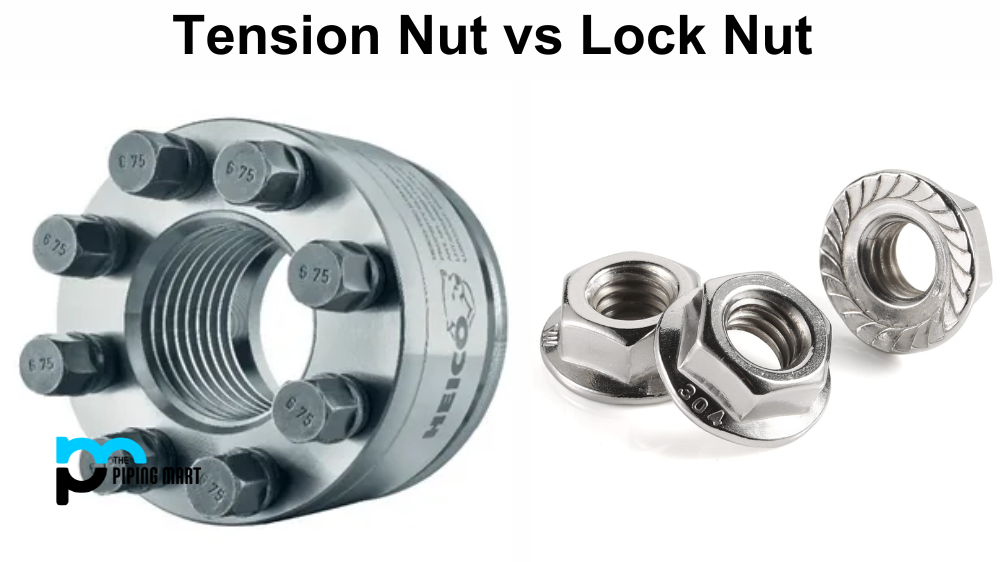When it comes to fastening two or more objects, nuts are used frequently, along with bolts, screws, and other fasteners. While working with metal objects, you may have heard about tension and lock nuts. You’ve come to the right place if you are puzzled and want to know more about these two. In this blog post, we will explain the difference between tension and lock nuts in detail.
What are Tension Nuts?
Tension nuts or jam nuts are particularly challenging to identify as they’re differently sized from other nuts. They’re slimmer and possess less depth than standard nuts. They are used to counteract the turning forces of threaded fasteners to prevent them from getting loose. Tension nuts are particularly useful in applications where two threaded bars must be joined together, and one end needs to be screwed into place, whereas the opposite must be kept from threading loose.
What are Lock Nuts?
A lock nut works differently than a tension nut. Lock nuts come in more common shapes, sizes, depths, and heights than tension nuts. The primary function of a lock nut is to prevent the loosening of the fastener under a certain load or vibration condition. It provides the necessary friction between the threaded fastener and the surface, increasing strength. Lock nuts come in various types, namely the Nyloc nut, the Kep nut, the Stover nut, and the Flexloc nut. Each type of lock nut is designed in such a way that it offers resistance to loosen fasteners in various applications.
Difference Between Tension Nuts and Lock Nuts:
Their primary function is the basic and most evident difference between tension and lock nuts. Although they might look identical, tension and lock nuts have distinctive uses. Tension nuts serve the primary function of counteracting the turning forces of threaded fasteners, whereas lock nuts are used to withstand loads and vibrations effectively. Tension nuts are commonly used in applications where two threaded bars must be joined together; however, lock nuts are used in automotive engineering, aerospace engineering, and other industrial and specialized applications.
Uses of Tension Nuts and Lock Nuts:
Since every nut has unique functions, its applications depend on its features. Tension nuts are used in industrial, automotive, and other specialized applications to offer stability and prevent fasteners from unscrewing. They are most commonly utilized in structural engineering, mining, and general machinery. On the other hand, lock nuts are used in industries where vibrations are common. They are used in automotive, aerospace, and mechanical engineering applications because they are known to withstand severe conditions and are highly reliable.
Conclusion:
Tension nuts and lock nuts are two distinct types of nuts that are commonly used in industrial applications. Though both nuts might seem similar in appearance, they do serve different functions. Tension nuts counteract the turning forces of threaded fasteners, whereas lock nuts prevent loosening under loads or vibrations. Which nut you use depends on your specific application requirements. Understanding these nuts’ features, properties, and differences will help you choose the right nut for your application and ensure your fastening process is less stressful and more productive.
Sakshee is a talented blogger, with a particular focus on the Business and Metal Industry. She is passionate about sharing her insights on various metal products and helping professionals to make a better decisions.




